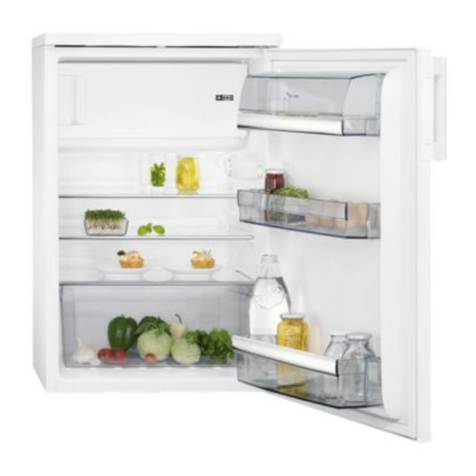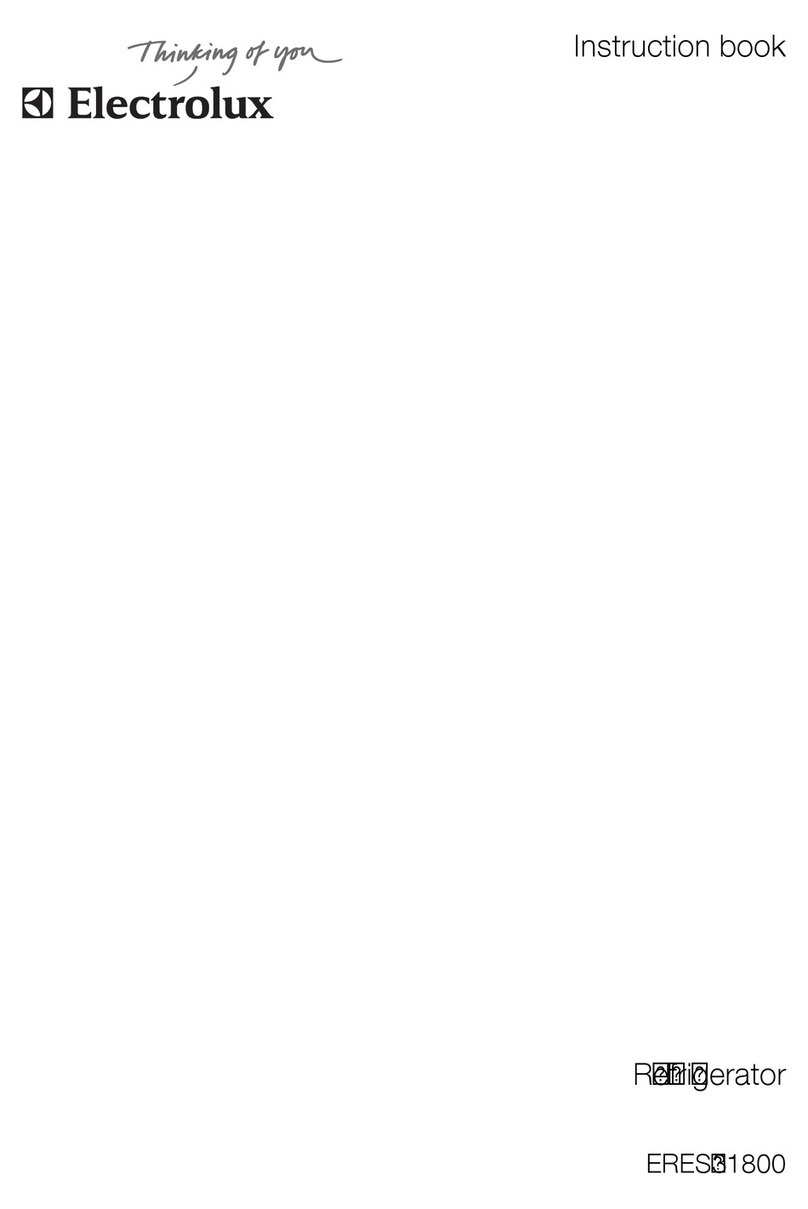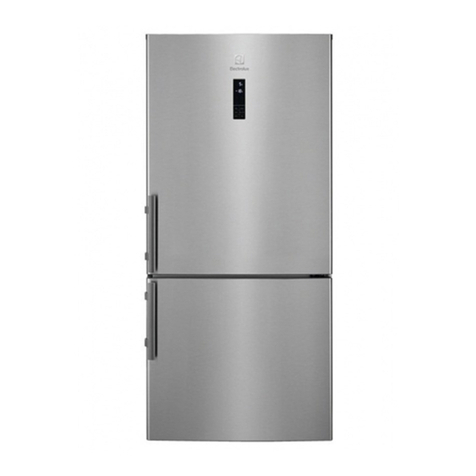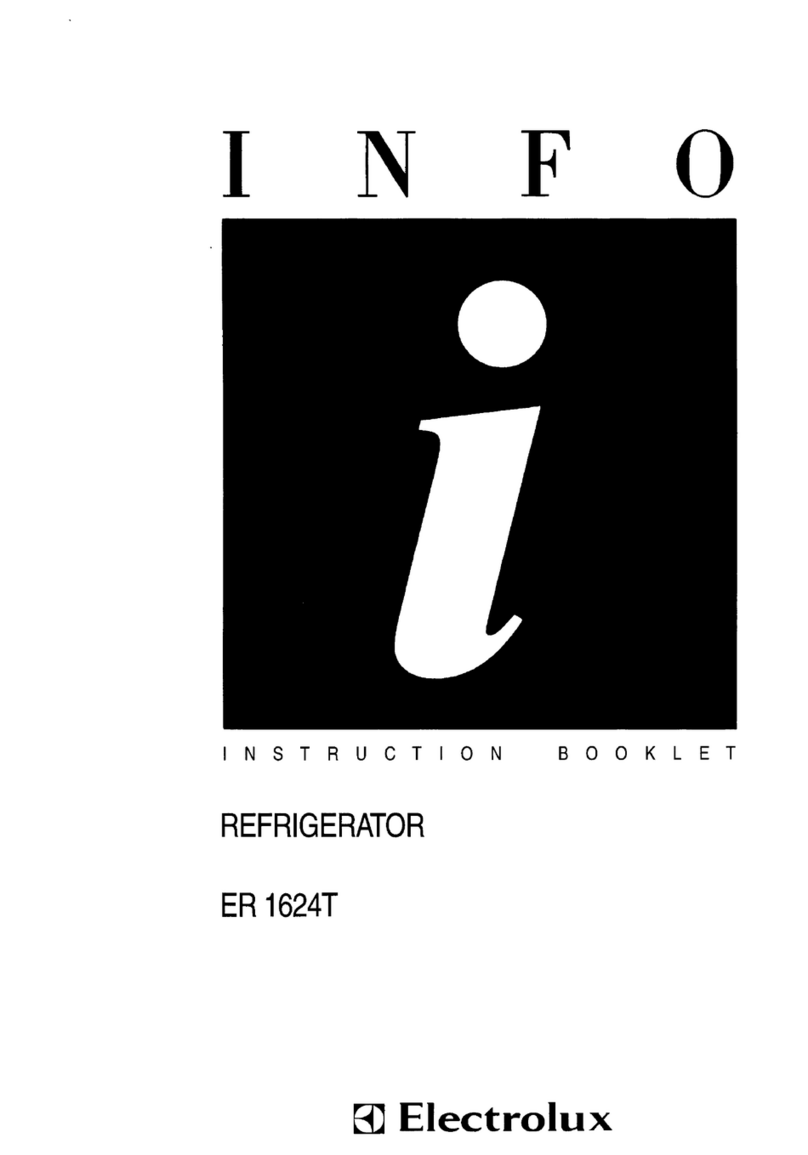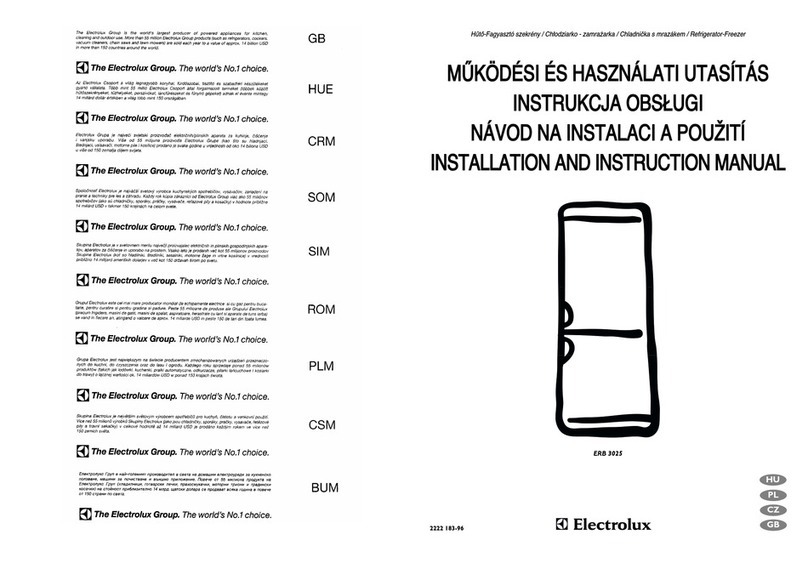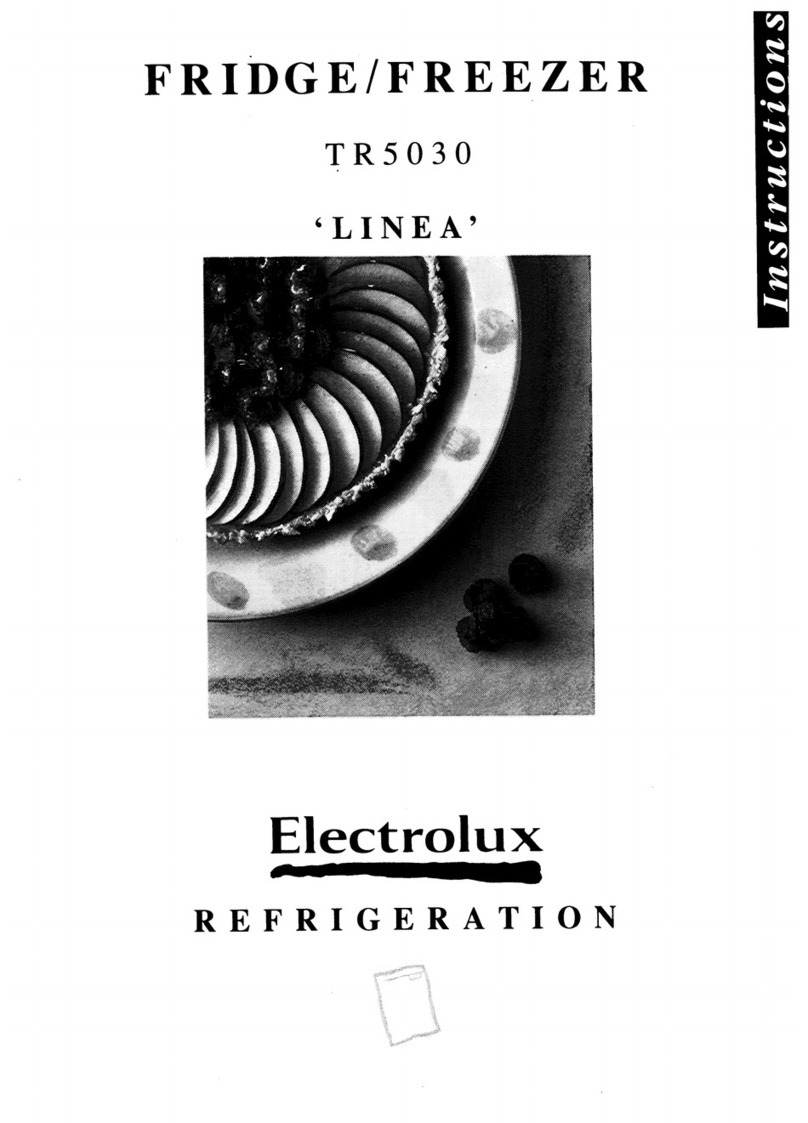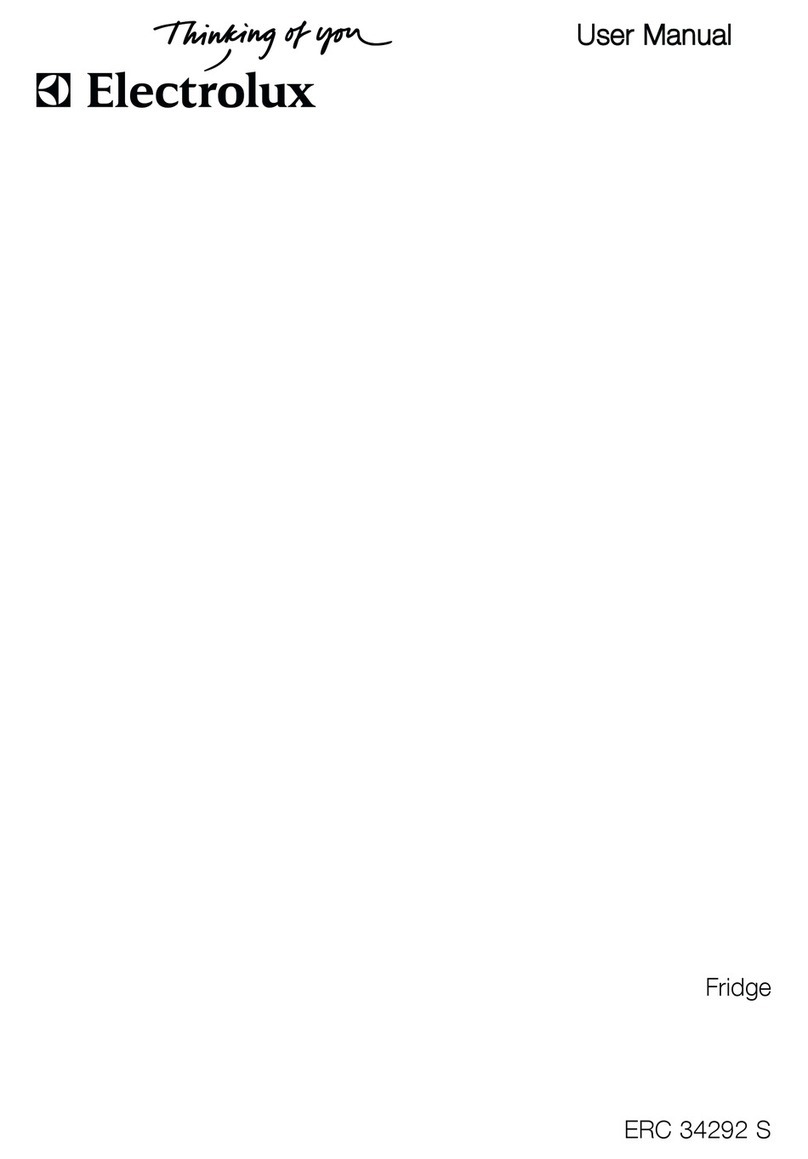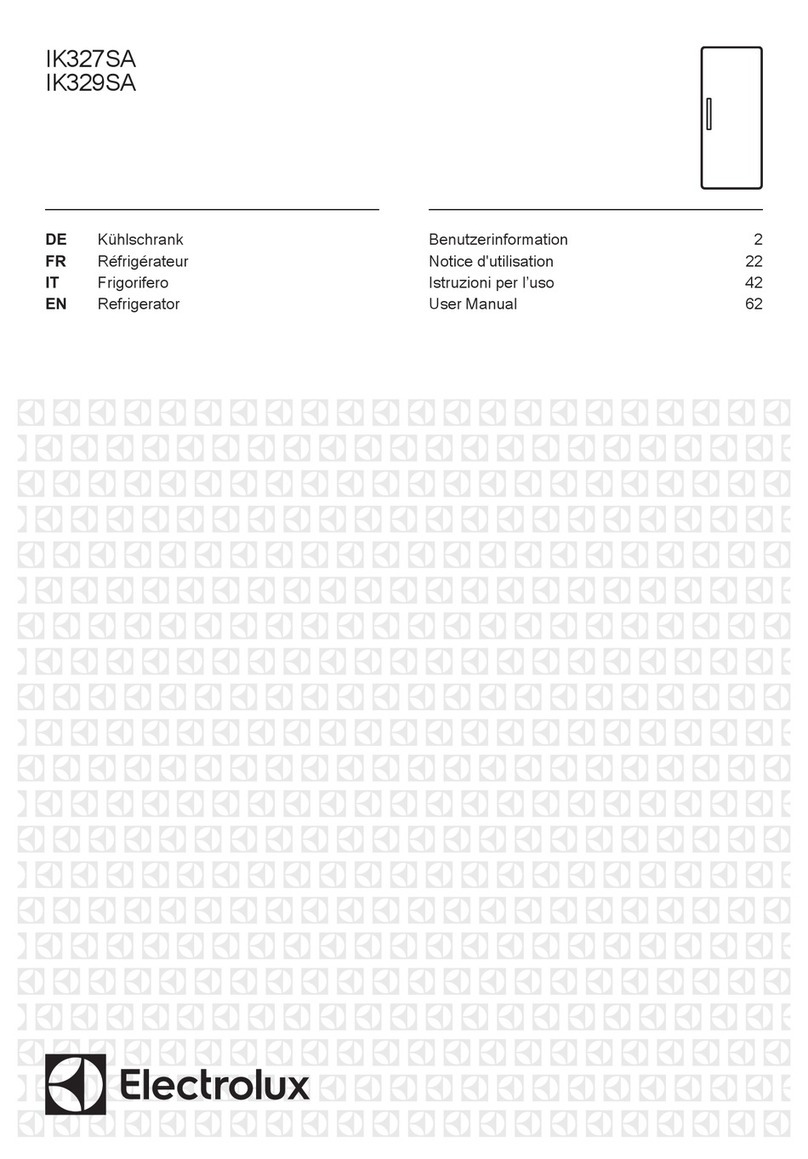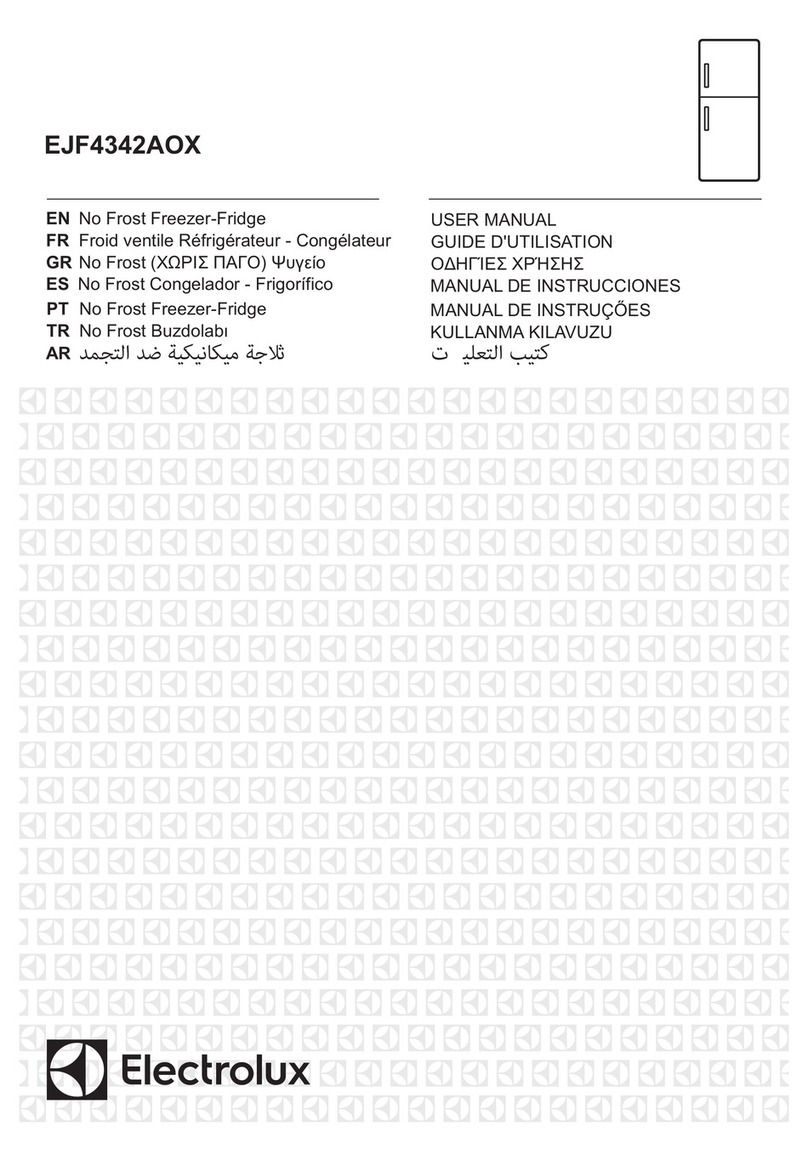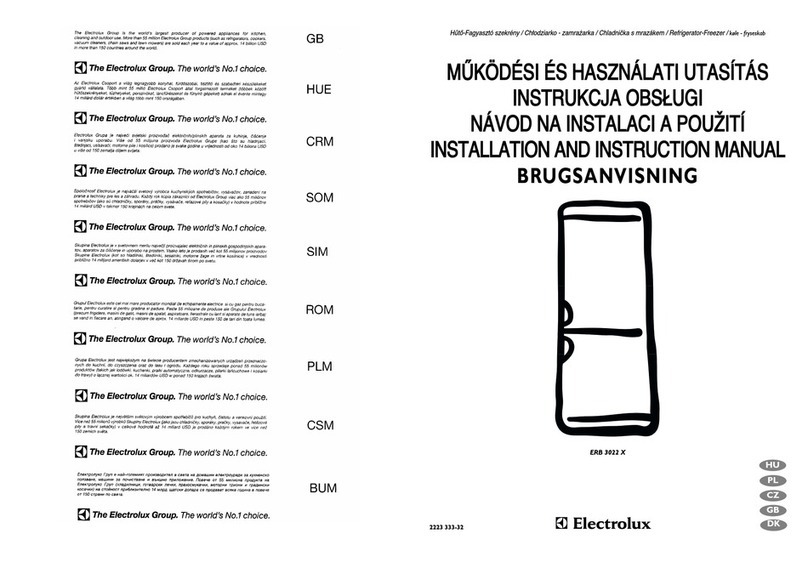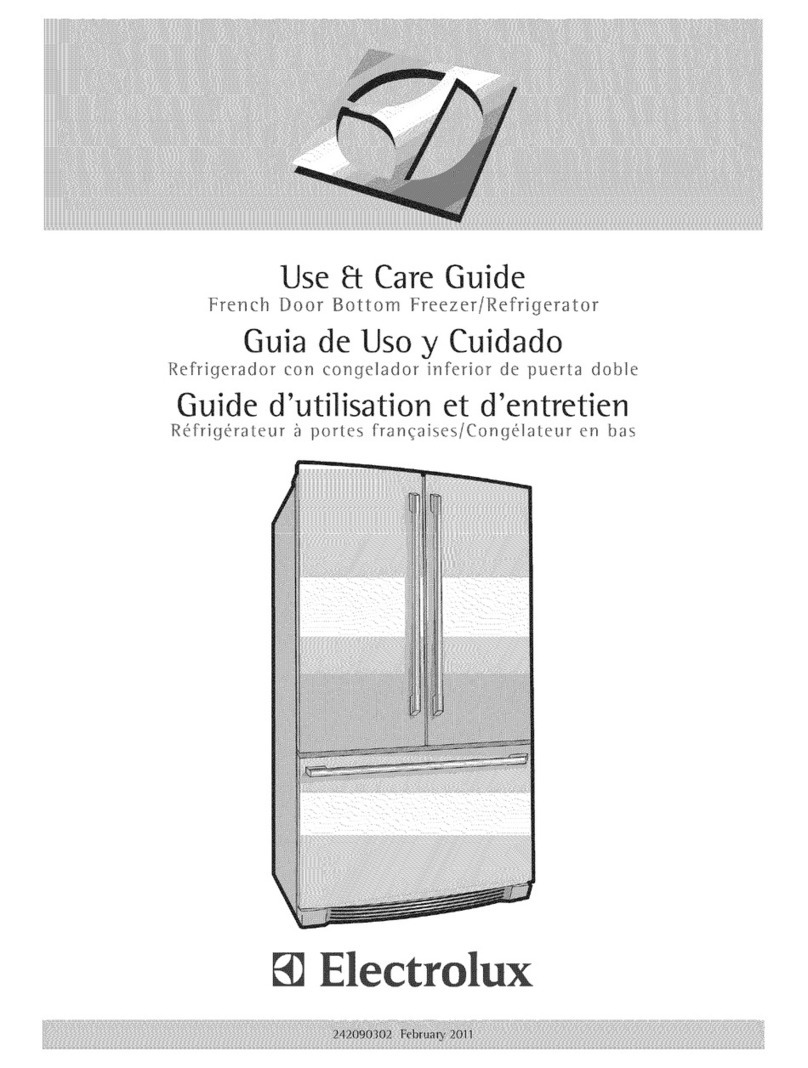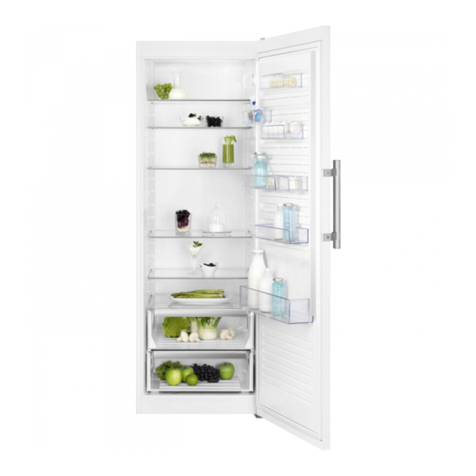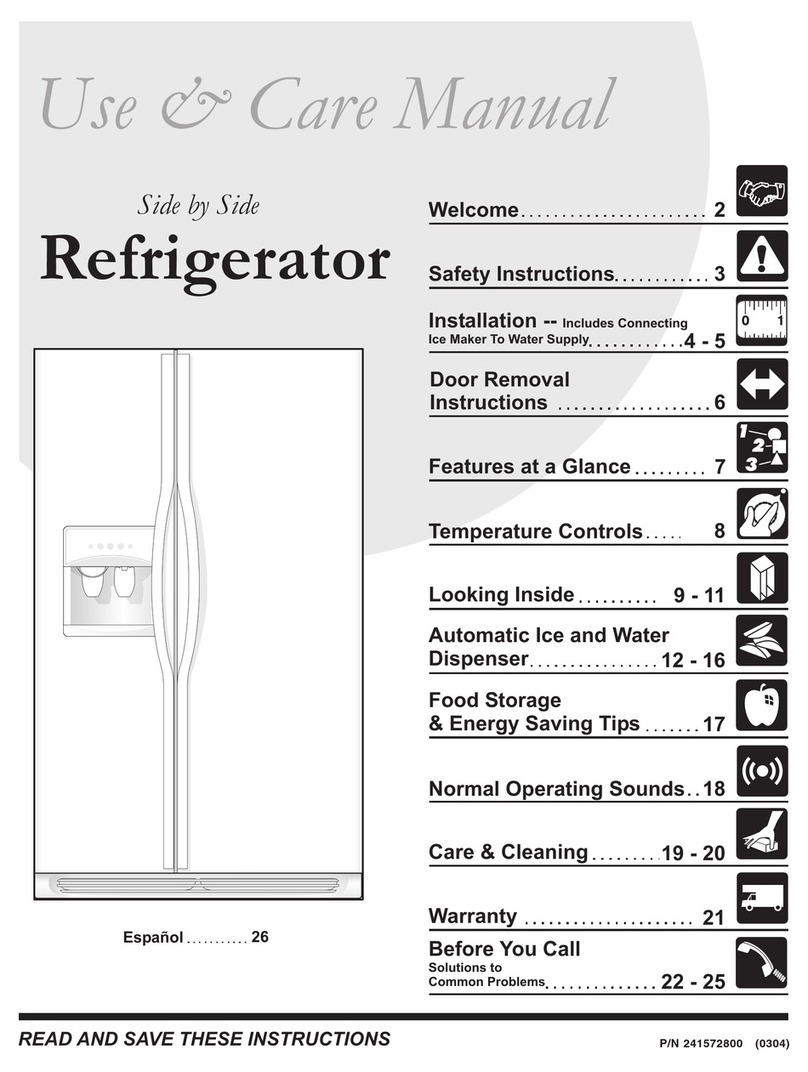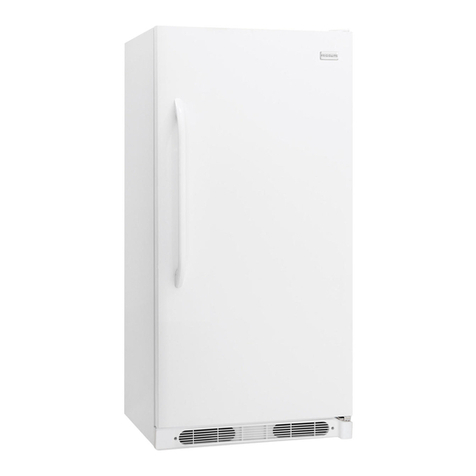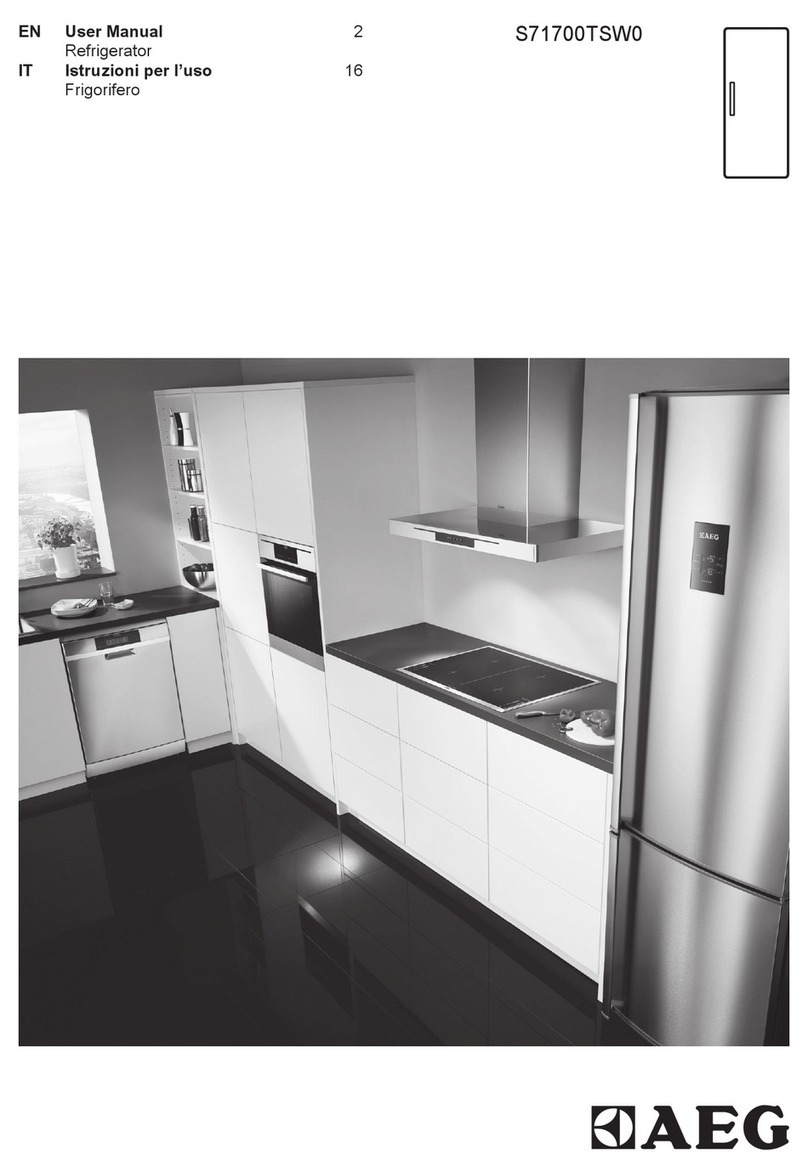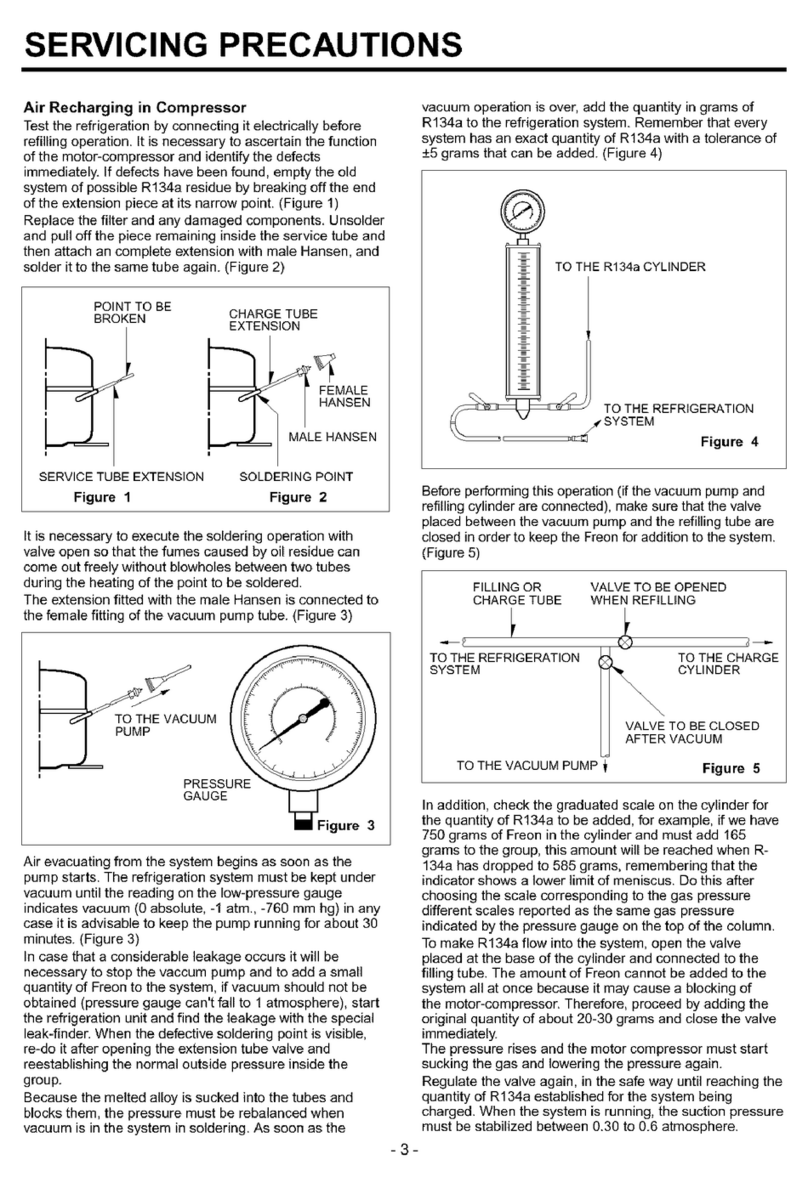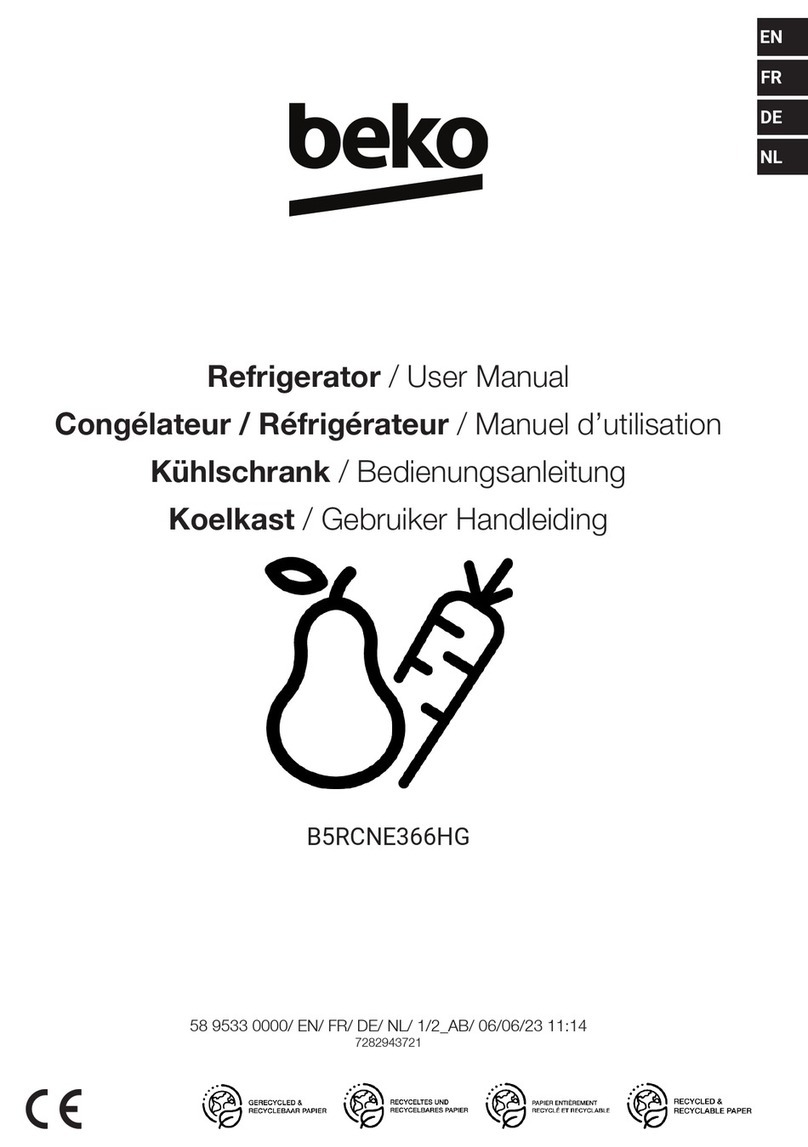3
containers with flammable materials, such as
spray cans, fire extinguisher refill cartri ges etc.
in the appliance.
Frozen foo shoul not be refrozen once it has
thawe out.
Do not place carbonate or fizzy rinks in the
freezer compartment.
Ice lollies can cause 'frost/freezer burns' if
consume straight from the freezer.
Do not remove items from the freezer
compartment if your han s are amp/wet, as
this coul cause skin abrasions or frost/freezer
burns.
Bottles an cans must not be place in the
freezer compartment they can burst when the
contents freeze.
Manufacturers' recommen e storage times
shoul be a here to. Refer to relevant
instructions.
Maintenance and leaning
Before cleaning, always switch off the appliance
an isconnect from the electrical supply.
When unplugging always pull the plug from the
mains socket, o not pull on the cable.
Servicing
This pro uct shoul be service by an
authorise engineer an only genuine spare
parts shoul be use .
Un er no circumstances shoul you attempt to
repair the appliance yourself. Repairs carrie out
by inexperience persons may cause injury or
serious malfunctioning. Contact your local
Service Force Centre.
At the end of the Appliance Life
When isposing of your appliance use an
authorise isposal site.
Remove the plug an ensure that any locks or
catches are remove , to prevent young chil ren
being trappe insi e.
The Appliance and the Environment
This appliance oes not contain gases which coul
amage the ozone layer.
Avoi amaging the cooling unit.
The packaging use on this appliance marke with
the symbol is recyclable.
Keep this instruction book for future
reference and ensure it is passed on to any
new owner.
IMPOR
IMPORT
TANT S
ANT SAFET
AFETY INS
Y INSTR
TRU TIONS
U TIONS
These warnings are provided in the interests of your safety. Ensure that you understand them all
before installing or using this appliance. Your safety is of paramount importance. If you are unsure
about any of the meanings or these warnings contact the ustomer are Department.
Prior to installation
Check the appliance for transport amage. Un er
no circumstances shoul a amage appliance be
installe . In the event of amage please contact
your retailer.
Installation
This appliance is heavy. Care shoul be taken when
moving it.
It is angerous to alter the specifications or attempt
to mo ify this pro uct in any way.
Ensure that the appliance oes not stan on the
electrical supply cable. If the supply cable is
amage , it must be replace by a cable available
from your local Service Force Centre.
Any electrical work require to install this appliance
shoul be carrie out by a qualifie electrician or
competent person.
Parts which heat up shoul not be expose .
Whenever possible, the back of the appliance
shoul be close to a wall, but leaving the require
istance for ventilation, as state in the installation
instructions.
The appliance shoul be left for 2 hours after
installation before it is turne on, in or er to allow
the refrigerant to settle.
hild Safety
Do not allow chil ren to tamper with the controls or
play with the pro uct.
There is a risk of suffocation! Keep packaging
material away from chil ren!
Safety precautions for isobutane
Warning
The refrigerant isobutane (R 600a) is containe
within the refrigerant circuit of the appliance, a
natural gas with a high level of environmental
compatibility, which is nevertheless flammable.
Keep ventilation openings, in the appliance
enclosure or in the built-in structure, clear of
obstruction.
Do not use mechanical evices or other means to
accelerate the efrosting process, other than those
recommen e by the manufacturer.
Do not amage the refrigerant circuit.
Do not use electrical appliances insi e the foo
storage compartments of the appliance.
During Use
This appliance is esigne for omestic use only,
specifically for the storage of e ible foo stuffs. It is
not inten e for commercial or in ustrial use.
Containers with flammable gases or liqui s can
leak at low temperatures. Do not store any
